
Mir Qamar-ud-din Khan Siddiqi also known as Chin Qilich Qamaruddin Khan, Nizam-ul-Mulk, Asaf Jah and Nizam I, was the first Nizam of Hyderabad. He was married to the daughter of a Syed nobleman of Gulbarga. He began his career as a favourite of the Mughal emperor Aurangzeb, who made him a general. Following the death of Aurangzeb in 1707, Asaf Jah refused to favour any one of Aurangzeb's warring sons and as such remained neutral. When Aurangzeb's third son Bahadur Shah ultimately emerged victorious, Asaf Jah was rotated as governor of multiple Mughal provinces until 1714, when he was created Viceroy of the Deccan with authority over six Mughal provinces in southern India from 1714 to 1719. From 1719 onwards he was involved in combating the intrigues of the Sayyid Brothers. From 1720 to 1722 he helped the new Mughal emperor Muhammad Shah eliminate the Sayyed brothers and was rewarded by being elevated to the grand viziership from 1722 to 1724.
Nawab, also spelled Nawaab, Navaab, Navab, Nowab, Nabob, Nawaabshah, Nawabshah or Nobab, is a royal title indicating a sovereign ruler, often of a South Asian state, in many ways comparable to the western title of Prince. The relationship of a Nawab to the Emperor of India has been compared to that of the Kings of Saxony to the German Emperor. In earlier times the title was ratified and bestowed by the reigning Mughal emperor to semi-autonomous Muslim rulers of subdivisions or princely states in the Indian subcontinent loyal to the Mughal Empire, for example the Nawabs of Bengal.
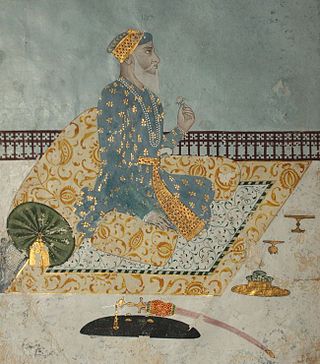
Saadat Ali Khan Nishapuri was the Subahdar Nawab of Awadh (Oudh) from 26 January 1722 to 1739 and the son of Muhammad Nasir. At age 25 he accompanied his father on the final campaign of the Mughal Emperor Aurangzeb against the Marathas in the Deccan, and the emperor awarded him the title of Khan Bahadur for his service.

Paigah family was a noble family from the former Hyderabad State. The family maintained their own court, individual palaces, and a standing army of about fourteen thousand infantry and cavalry troops.
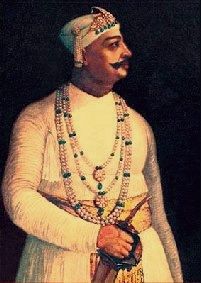
Sikander Jah, Asaf Jah III, was the 6th Nizam of Hyderabad, India from 1803 to 1829. He was born in Chowmahalla Palace in the Khilwath, the second son of Asaf Jah II and Tahniat un-nisa Begum.
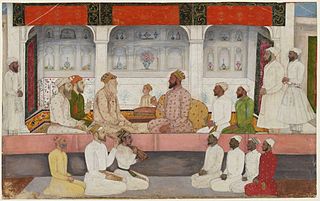
The Sayyid brothers refers to Syed Hassan Ali Khan Barha and Syed Hussain Ali Khan, who were two powerful nobles during the decline of the Mughal Empire.

The Nawab of Awadh or the Nawab of Oudh was the title of the rulers who governed the state of Awadh in north India during the 18th and 19th centuries. The Nawabs of Awadh belonged to an Iranian dynasty of Sayyid origin from Nishapur, Iran. In 1724, Nawab Sa'adat Khan established the Oudh State with their capital in Faizabad and Lucknow.

The Asaf Jahi was a Muslim dynasty that ruled the Hyderabad State. The family came to India in the late 17th century and became employees of the Mughal Empire. They were great patrons of Indo-Persian culture, language, and literature, and the family found ready patronage.
Zain or Zayn is an Arabic personal name meaning "beautiful" or "handsome". Zayyan is a variation of Zain.
Morashi, also Marashi, is a given name of Iranian origin meaning ‘happy-one’ possibly indicating ancestry from Ali al-Marash, the grandson of the fourth Shia imam, Ali ibn Husayn, also known as Zayn al-Abidin. The name is generally associated with a clan of Shi'ite Muslims who are descended from Ali ibn Husayn, who himself was a great-grandson of the Islamic prophet Muhammad. Today, about 2,000,000 members of the Marashi clan are mostly found in Iran, Türkie, Iraq, Syria, Kashmir and the UAE.
Dar-ul-Shifa is a neighbourhood in of the Old City of Hyderabad, India, named after the 16th-century hospital it once housed. The location was founded in AD 1591, more than 400 years ago, by Mohammed Quli Qutub Shah, the founder of Hyderabad city. Todday it houses a large population of Shia Muslims and comes alive on the days of Muharram and Shia festivals. Most of the households have family members settled abroad, and whose remittances increase the quality of life.

Ghulam Husain Ali Khan aka Ghulam Hussainy or Umdat ul-Umra, was the Nawab of the Carnatic state in the Mughal Empire from 1795 to 1801.

Bibi-Ka-Alam or Bibi-Ka-Alawa is an annual procession during Muharram. Bibi-ka-Alam, installed in the name of Imam Hussain, grandson of Muhammad and son of Ali ibn Abi Talib and Muhammad's daughter Fatimah, at the Bibi ka Alawa at Dabirpura, Old City on the 10th day following Moharram. It is a Shia event. The procession starts at Alawa-e-bibi situated at Dabirpura and ends at Chaderghat. During the procession the devotees mourn the death by reciting Nauhey,. The daughter of Mohammed, Fatima-e-Zehra, is called Bibi. The locality is known as Mohalla Bibi Ka Alawa.
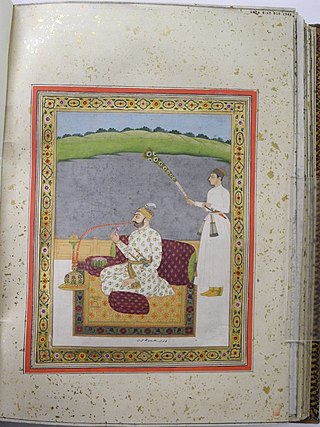
Nawab Sayyid Hassan Ali Khan Barha, also known as Qutub-ul-Mulk, Nawab Sayyid Mian II, Abdullah Khan II, was one of the Sayyid brothers, and a key figure in the Mughal Empire under Farrukhsiyar.
Sayyid Hussain Khing Sawar or Hussain Khingsawar, Also known as Meera Syed Hussain, Who was lineal descendant of 4th Imam Ali ibn Husayn Zayn al-Abidin (A.S).He came here in India to spread peace They were from Mashhad (IRAN),He came to India in 1174 A.D.

Umdat ul Mulk, Amir Khan Mir Ishaq was a nobleman of the Mughal Empire. He was a son of Amir Khan Mir Miran and initially held the title of Aziz Ullah Khan.

The Barha dynasty was a Shi'a Indian Muslim dynasty that was influential in India during the era of Delhi Sultanate and Mughal Empire.
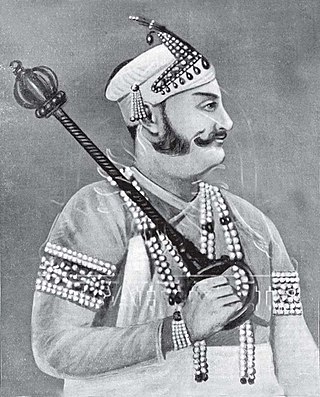
Shams ul-Umara, Shams ul-Mulk, Shams ud-Daula, Nawab Muhammad' Abu’l Fath Khan Bahadur, Taigh Jang Bahadur ['Abu’l Khair Khan II] [Imam JungIII] was an Indian nobleman and founder of the House of Paigah.













